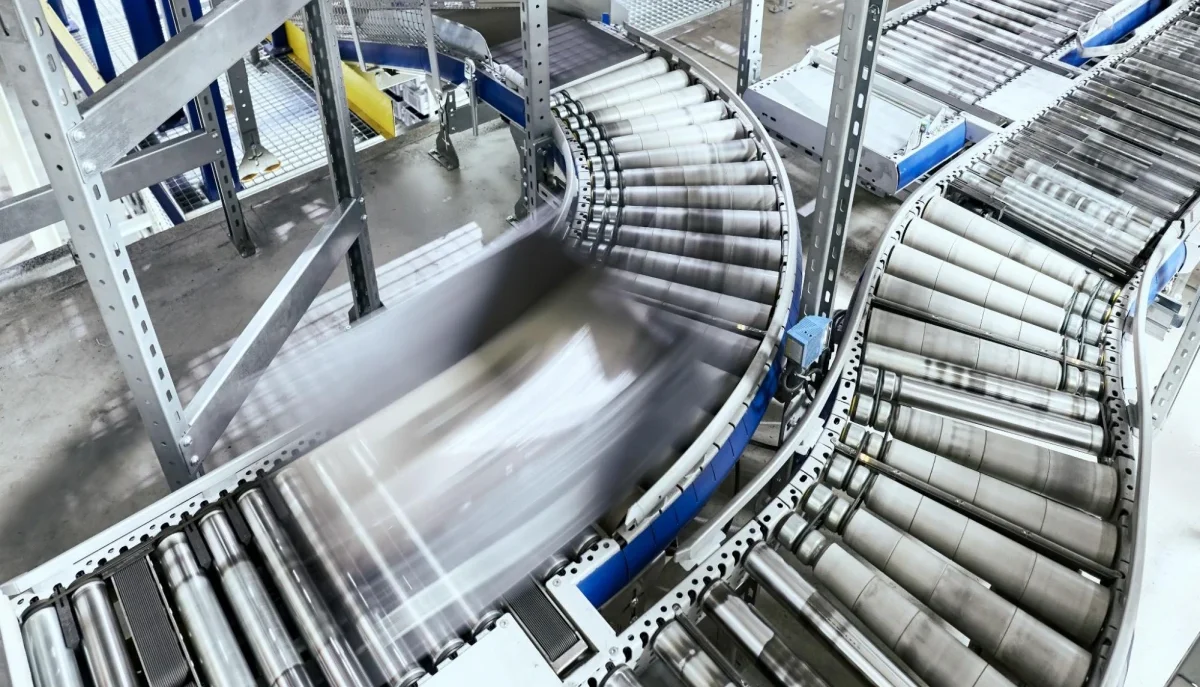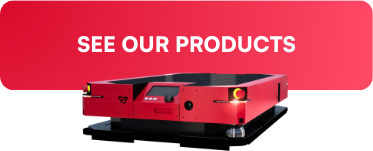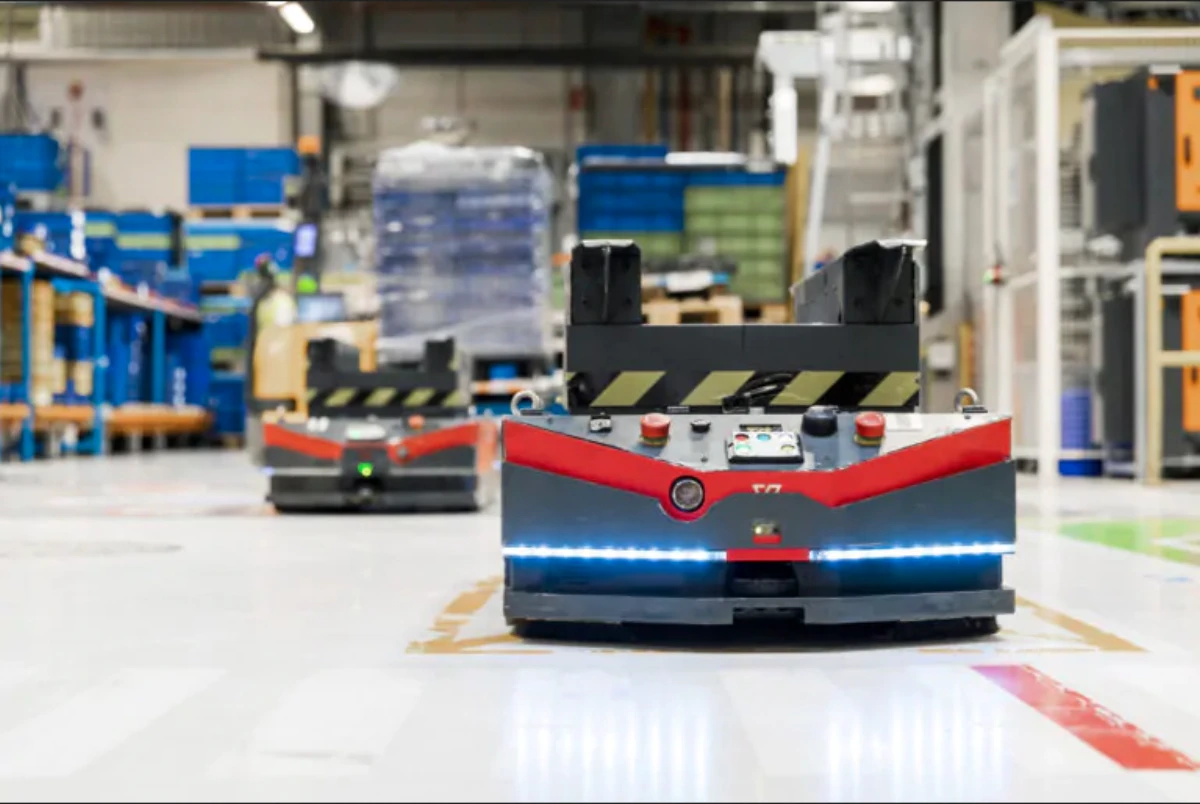What is warehouse automation?

Nowadays, automation solutions are quite common in various industries – some of them are already using fully automated factories. Warehouse automation is also increasingly common – roller conveyors, AGV (Automated Guided Vehicles) robots and AMRs (Autonomous Mobile Robots), or fleets of self-driving forklifts are almost standard sights, especially in warehouses owned by large companies with international reach. What exactly is it, and when should you implement warehouse automation?
What is warehouse automation?
Simply put, automation in a warehouse involves the partial or complete replacement of human labour in logistics processes with automated solutions. Fully automatic warehouses can operate around the clock without providing lighting. The human role in such warehouses is limited solely to supervising the operation of the machines/their operating system and carrying out activities which, for the moment, are beyond the capabilities of the machines.
With the technologies available today, the automation process can cover virtually the entire warehouse operation – receipt of goods brought in by an external supplier, internal transport, storage, complementing the order and forwarding it for further shipment. Warehouse automation works best when the automated machines are paired with a complementing software.
The equipment/machinery most commonly used in automated systems include:
- automatic racks and cargo retrieval systems
- mobile barcode scanning devices
- automatic belt/roller conveyor system
- AMR and AGV robots (including automated mobile cleaning robots)
- vertical lift systems
- automated sortation systems
Operations of an automated warehouse are supervised by specially developed WMS (Warehouse Management System), which can be used, for example, to determine the destination points of AGV robot routes or monitor order picking performance. Warehouse managers can access such systems remotely and use them to monitor each of the warehouse tasks in real time, adjusting the settings if necessary.
Levels of warehouse automation
According to professional nomenclature, a warehouse can be at one of 3 stages/levels of automation:
- Low level – all decision-making and operational processes are handled by people, employees also take care of most tasks related to the transport and storage of goods in a supply chain.
- Medium level – this is where warehouse management systems come into play, allowing the transfer of some responsibilities previously placed on humans to machines.
- High level – at this stage, most, or even all warehouse operations are performed by machines and intelligent devices. The human role here is reduced to an absolute minimum.
Benefits of warehouse automation solutions
Introducing automation into the warehouse brings tangible benefits not only for the company in question, but also for its customers and business partners. The main advantages of warehouse automation projects include:
Higher quality and speed of warehouse service
Introducing automation means a high degree of precision and repeatability in the way in which tasks are carried out – this increases productivity and eliminates errors due to, for example, operator fatigue. An automated storage facility can handle the same high volumes of goods each day quickly, efficiently and without error.
In addition, as already mentioned here, automated storage facilities and distribution centres can work on a 24-hour basis – you won’t have to worry about staff shortages or scheduling dozens of people.
Increased work ergonomics and safety
Currently available, new technologies make it possible to create machines that can safely interact with humans on a single work surface (so-called cobots). What’s more, by introducing automated warehouse systems and machines into the warehouse, accidents, and other unwanted incidents, can be significantly reduced – this is confirmed by many companies that have decided to take this step.
Even a minimal involvement of intelligent machines has a massive impact on employee comfort and ergonomics – they can take over the most strenuous/dangerous tasks.
Optimal use of available space
Robots and other machines can operate in very tight spaces – their use therefore eliminates the need to leave wide spaces (normally used by forklifts) between warehouse racks. This allows much more space to be allocated to goods – more storage space translates to higher potential warehouse profits.
Lower operating costs
Since we have already touched on the financial aspect, it is impossible not to mention the real savings resulting from warehouse automation. Considerable sums can be saved on lighting alone (after all, robots do not need it), the lack of interruptions or the significantly lower number of employees needed to operate the warehouse. Savings also result from the advantages mentioned earlier.
It’s a fact that warehouse automation systems are not cheap to implement, but the warehouse solutions implemented with them will quickly start to generate additional profits and increase customer satisfaction.
When should you start implementing automated solutions in your warehouses?
The answer to this question is simple – as soon as the warehouses are ready for it and sufficient funds are available. How can a warehouse be prepared for the introduction of automation solutions? First, limit the number of processes that can only be performed manually and adapt the space for automatics implementation. In general, these do not have to be major changes – most of the software and technical solutions available today (including our Autonomy@Work/Virtual Factory and VersaBots) are scalable and adaptable to the physical structure of any warehouse. AMRs can navigate complex warehouse layouts without obstruction, colliding with anything, moving through restricted areas etc. This is possible due to advanced laser guidance systems.
Automated warehouses will soon start to pay for themselves and the resulting reduction in operating costs will quickly become apparent on the income and expenditure balance sheet. This is why it is worth thinking about automation at the warehouse construction stage so that everything is ready for its implementation right from the start, and you can enjoy its benefits to the fullest. In already existing warehouses, it can be introduced step by step, as even a few robots are enough to make a difference and significantly increase productivity and efficiency.
In summary – with warehouse automation technology and automated material handling equipment, you can significantly improve the efficiency of your storage facility, thereby significantly increasing revenue and reducing costs. The vast majority of companies that have already taken advantage of this option confirm that it is a highly beneficial investment. It is definitely worth considering – even a partial implementation of automation brings tangible benefits in the form of greater efficiency in internal logistics and the possibility of delegating warehouse employees to other tasks.

